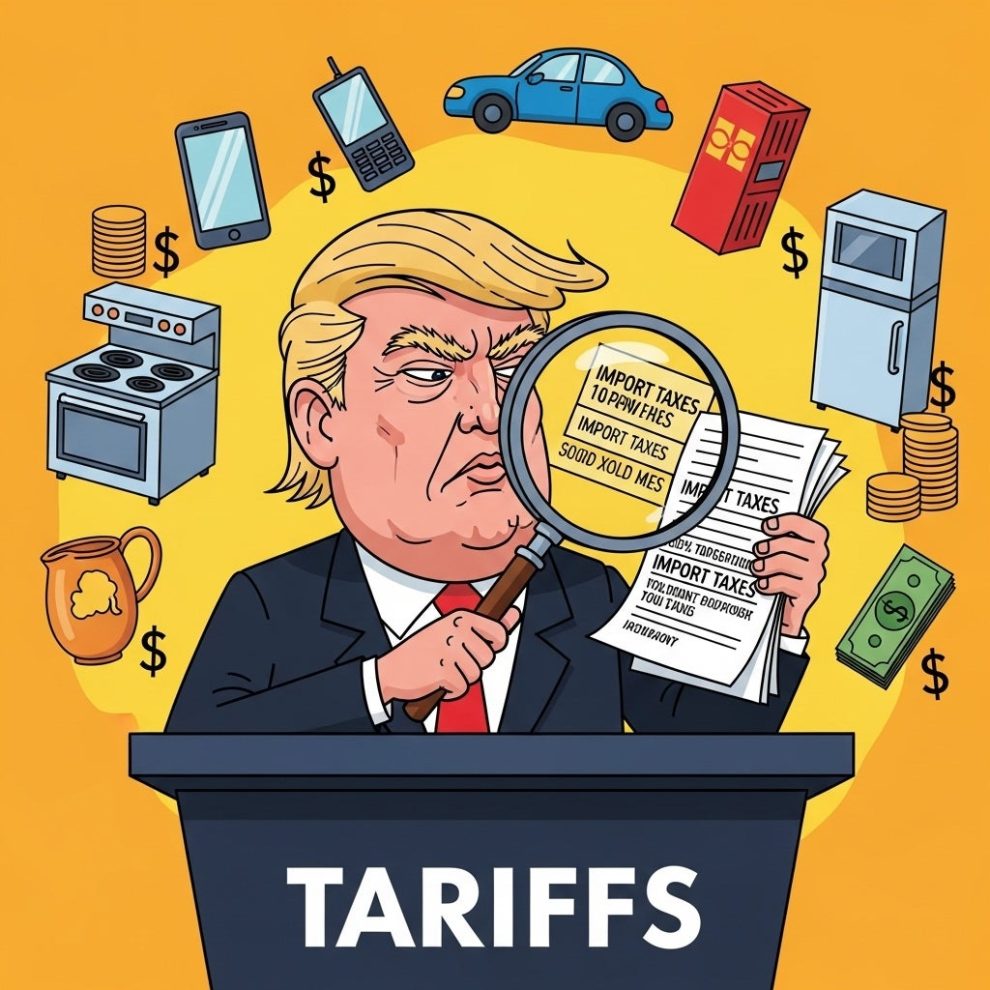Just as Wall Street seemed as though a sense of stability was finally seeping into 2025, President Trump served a timely reminder that tariff uncertainty will continue to drive market volatility.
The President announced that he would be “recommending” sweeping 50% tariffs on all European Union imports, due to start on June 1, as a result of a perceived lack of progress in trade negotiations with the bloc.
Trump elaborated that factors like the EU’s trade barriers, VAT taxes, corporate penalties, non-monetary trade barriers, and lawsuits against US firms had contributed to an annual trade deficit exceeding $250 billion, which was labeled “totally unacceptable.”
European benchmarks bore the brunt of the President’s tariff threat, with the Euro STOXX 50 index tumbling 3% while Italy’s FTSE MIB was the worst-affected national index, falling 2.9%.
However, all eyes are now on the S&P 500 and how US markets will respond, just a matter of weeks after the US and China’s escalating trade war briefly sank the index before a climbdown restored a measure of investor confidence.
The shock of the announcement triggered a 1.62% decline in the index while investors struggled with the severity of the President’s threats.
Worryingly for the tech-heavy S&P 500, Trump also took aim at Apple by suggesting that iPhones should be manufactured in the United States or else the product will be subject to a 25% tariff.
At a time when markets have been recovering following the announcement of a 90-day delay to the United States’ reciprocal tariffs announced in April, as well as a subsequent delay to the escalated tariffs on Chinese imports, Trump’s hard stance on the European Union and tech imports serves as a timely reminder that Wall Street needs to become accustomed to tariff uncertainty in 2025.
An Index in Flux
Forecasts for the S&P 500 have changed dramatically throughout different stages of the year. Despite trading more than 15% lower between January 1 and April 8, 2025, the index briefly turned positive for the year in mid-May before losing momentum once again.
Just hours before Trump’s announcements, Capital Economics raised its forecast for the S&P 500 to 7,000 by the end of 2026, citing the easing of trade tensions and improved market conditions as a core reason for the upturn in confidence.
This positive sentiment was echoed by Sonu Varghese, a global macro strategist with Carson Wealth, who suggested that there was ‘too much uncertainty,’ but that the Trump administration’s recent pullbacks from their initial tariff salvo were a cause for cautious optimism.
This turnaround in sentiment has been astonishing when looking back at April’s tariff-related downturn. In the midst of Trump’s tariff uncertainty, the Economy Forecast Agency updated its expectations for the S&P 500 to an annual close of 4,379. Looking further ahead to the end of 2026, expectations appeared a little rosier at 5,708.
These major expectation shifts from economists show that Wall Street is struggling to keep up with the unpredictability of the Trump administration and that the S&P 500 is likely to be more vulnerable to unexpected investor sentiment changes based on the President’s use of social media to share frequent policy updates.
Disrupting the Magnificent Seven
It would be a challenge to assess which of Trump’s announcements – on EU tariffs and levies on Apple product imports – has the most significant ramifications for the S&P 500.
The Magnificent Seven, a collective of large-cap tech stocks consisting of Apple, Amazon, Microsoft, Google parent Alphabet, Nvidia, Meta, and Tesla, accounts for more than one-third of the total market capitalization of the S&P 500. This means that tariff disruption affecting these stocks can severely impact the performance of the index as a whole.
Upon claiming that Apple AAPL would be subject to a 25% import tariff if iPhones continue to be manufactured outside of the United States, the tech giant’s stock slipped 3.72% at the beginning of trading on Friday, 23 May.
Apple had been resorting to airlifting as much as 600 tons of iPhones from India as a means of bypassing tariffs. However, Trump’s ambitions for American firms are to shift manufacturing to the United States, helping to boost industry.
Should the President adopt a similar stance to US tech leaders and large-cap firms, we could see severe disruption throughout many key market players and their supply chains.
Given that manufacturing in China, for instance, is significantly lower in cost compared to the United States due to factors like cheaper labour, smaller energy costs, and stronger logistics, the shift to US-based manufacturing could be a significant disruptive force should domestic infrastructure struggle to keep up.
Adapting to Uncertainty
2025 is fast becoming a year of extreme market uncertainty due to the unpredictability of tariffs and the willingness of the President to share prospective policy shifts on social media.
For investors, it’s essential to keep a level head when dealing with volatility in the S&P 500 and to avoid taking rash decisions by withdrawing investments or buying into speculative stocks on a whim.
We’re likely to learn a lot about Trump’s stance on tariffs as the initial 90-day tariff delay to April’s reciprocal tariffs ends on July 8. Until then, adopting a more cautious strategy could be the most measured strategy on Wall Street.
Disclosure: On the date of publication, Dmytro Spilka did not hold (either directly or indirectly) any positions in the securities mentioned in this article. The opinions expressed in this article are those of the writer. Dmytro Spilka does not intend to make a trade in any of the securities mentioned above in the next 72 hours.









Add Comment